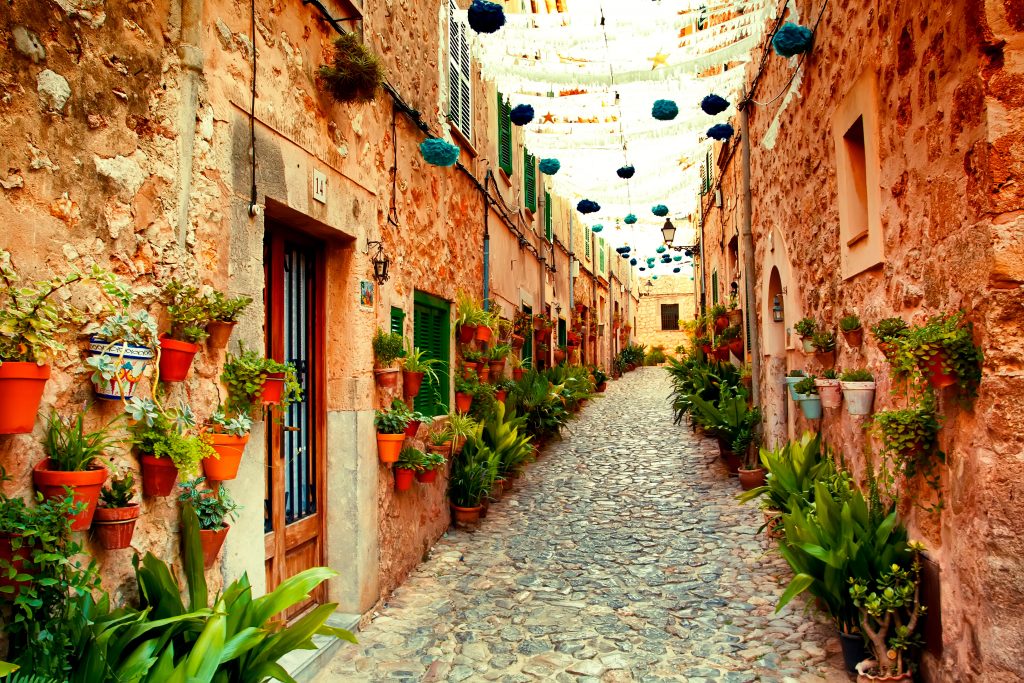
Spain is a country that tantalizes the senses with its vibrant culture, stunning coastlines, and mouthwatering cuisine. From the savory delights of tapas to the sun-drenched beaches and lively festivals, Spain offers an experience that attracts travelers from around the world. We invite you to embark on a journey through the flavors, the shores, and the events that make Spain a truly unforgettable destination.
A Fusion of Flavors: Spanish Gastronomy
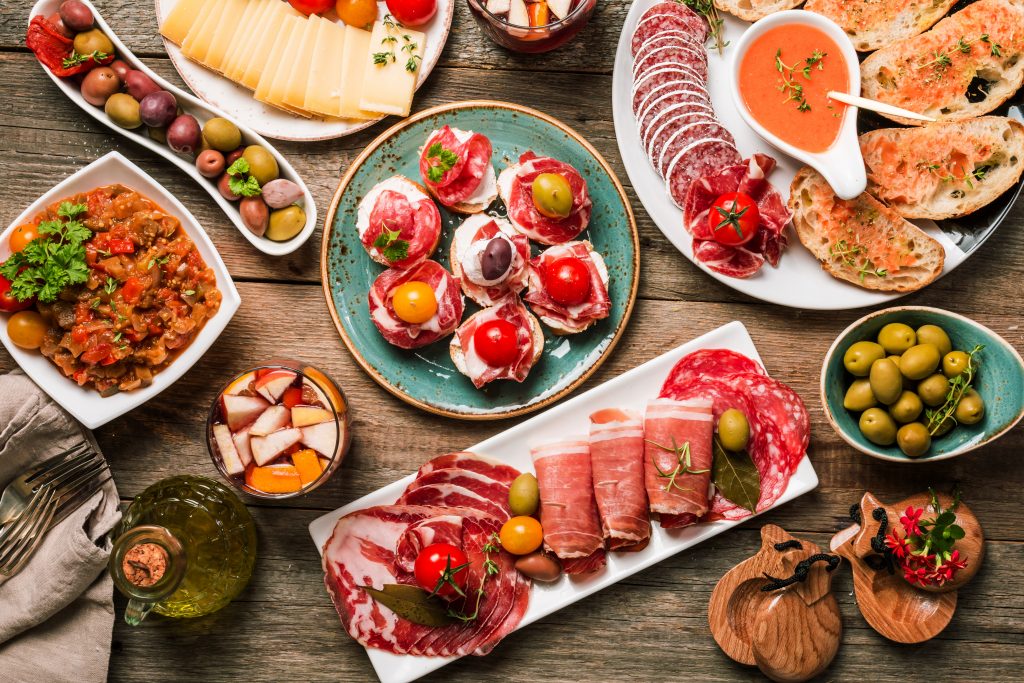
Spain’s culinary heritage is renowned worldwide, and exploring its gastronomy is a feast for the senses. From the bustling tapas bars of Barcelona to the seafood markets of Galicia, the country offers a diverse range of flavors and regional specialties.
Delve into the world of Spanish cuisine, savoring iconic dishes like paella, gazpacho, tortilla española, and jamón ibérico. Discover the art of tapas, where small plates bursting with flavor take center stage. Uncover the secrets of Spain’s wine regions, such as Rioja and Ribera del Duero, and indulge in the exquisite pairing of food and wine that defines Spanish dining culture.
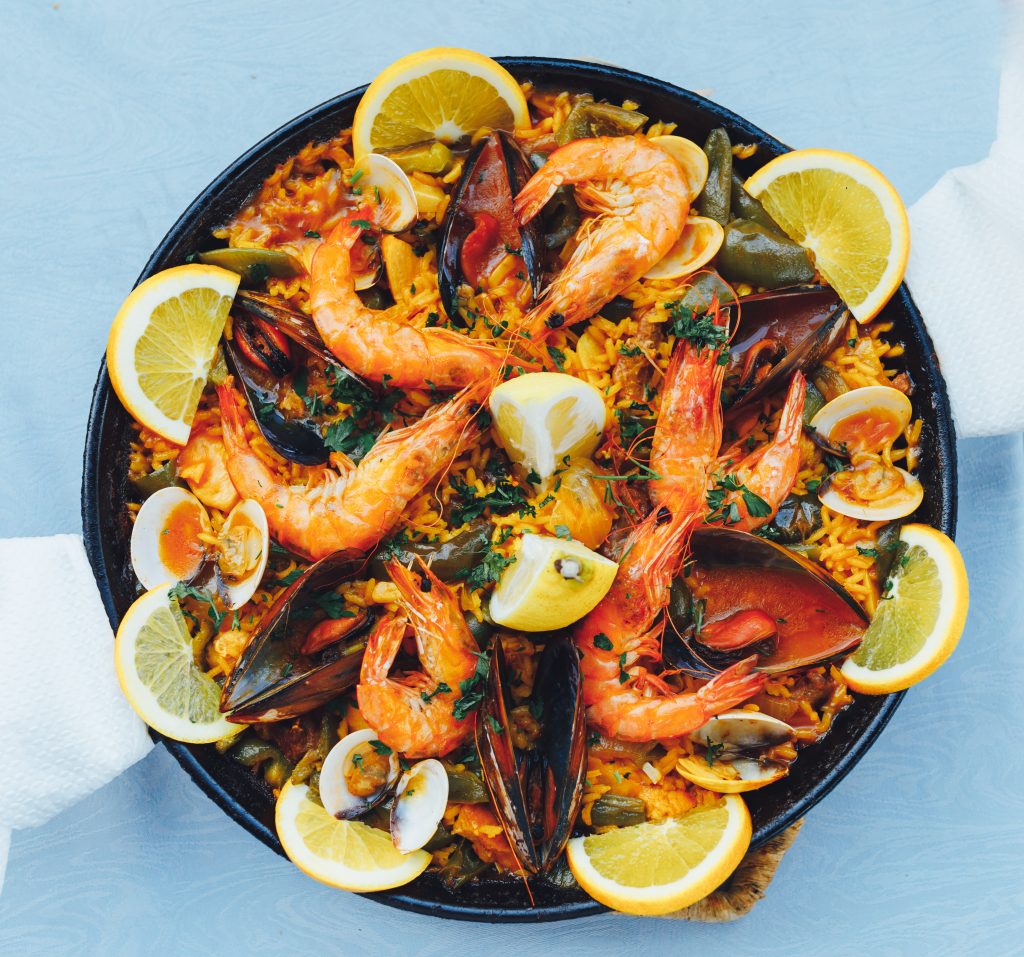
Paella, perhaps Spain’s most iconic dish, hails from the Valencia region. This saffron-infused rice dish comes in various forms, each highlighting a medley of ingredients such as seafood, rabbit, or vegetables. Another regional treasure is gazpacho, a refreshing cold soup originating from Andalusia, made with ripe tomatoes, peppers, cucumbers, and garlic.
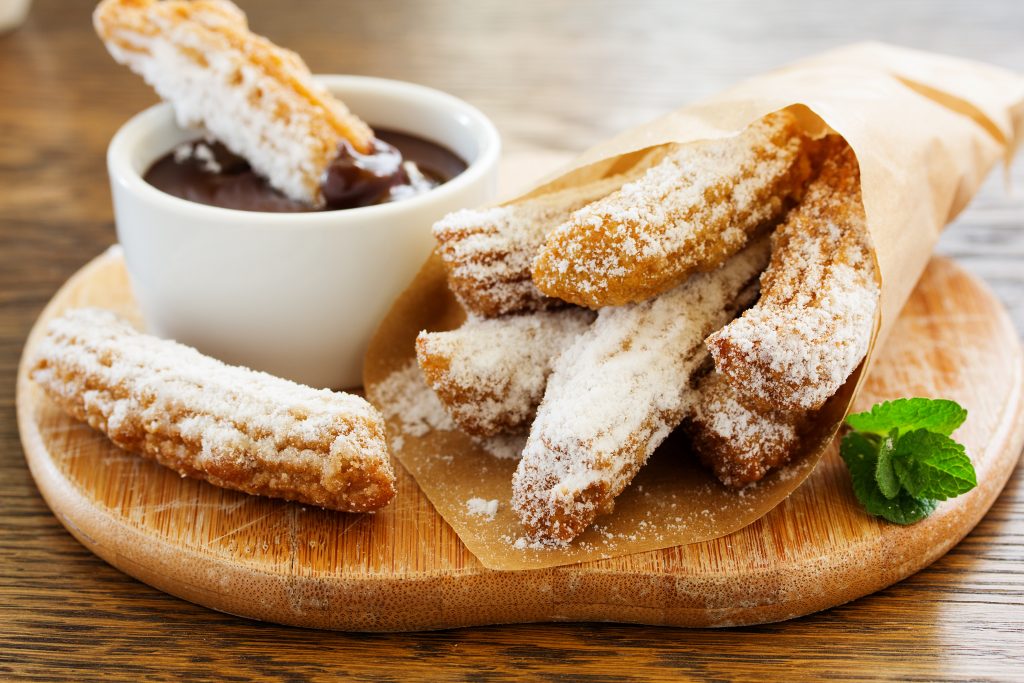
Desserts and pastries hold a special place in Spanish cuisine as well. Indulge in churros dipped in thick hot chocolate, enjoy the delicate layers of a traditional Tarta de Santiago, or relish the sweet warmth of a crema catalana, akin to crème brûlée.
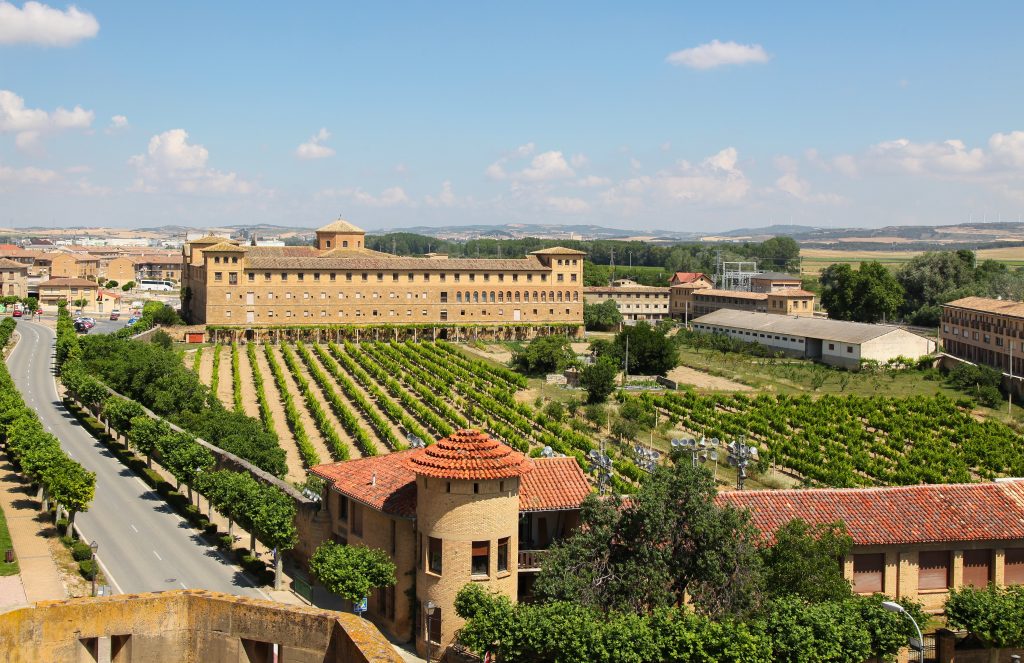
Spanish wine, including world-renowned varieties like Rioja and Tempranillo, complements the country’s culinary offerings. The tradition of enjoying wine with meals is a cherished aspect of Spanish culture, further enhancing the dining experience. In case you are curious about the differences between Rioja and Tempranillo, I have outlined the specifications below.
Tempranillo is a grape variety that is native to Spain and is considered one of the country’s most important and iconic grape varieties. It is known for producing wines with a wide range of styles, flavors, and characteristics, depending on the region where it is grown and how it is vinified.
Tempranillo grapes are used to make red wines, and the resulting wines can vary from light to full-bodied, with flavors of red fruit, cherry, plum, tobacco, leather, and sometimes vanilla and spice.
The grape’s name “Tempranillo” comes from the Spanish word “temprano,” which means “early,” referring to the grape’s tendency to ripen relatively early in the growing season.
Tempranillo is widely grown in various wine regions across Spain, with the most notable being Rioja, Ribera del Duero, Toro, and Navarra. It’s also grown in other countries under different names, such as Tinta Roriz in Portugal.
Rioja is a specific wine region in northern Spain, primarily known for producing red wines made from Tempranillo grapes. Rioja wines are often aged in oak barrels, which imparts additional flavors and aromas to the wine. Rioja wines are classified into different aging categories: Joven (young), Crianza, Reserva, and Gran Reserva. These categories indicate the minimum aging requirements for the wines in terms of time spent in oak barrels and in bottle before release. The name “Rioja” comes from the region itself and is synonymous with high-quality Spanish wine.
In summary, Tempranillo is the grape variety used to make many red wines in Spain, including those from the Rioja region. Rioja, on the other hand, specifically refers to wines produced in the Rioja wine region, which is renowned for its Tempranillo-based red wines with distinct aging classifications and styles.
Beaches In Spain

Spain is blessed with a vast and diverse coastline that offers a plethora of beautiful beaches, attracting millions of visitors each year. Here are some of the most notable beaches in Spain:
Playa de la Concha (La Concha Beach) – Located in San Sebastián, in the Basque Country, Playa de la Concha is often regarded as one of Europe’s best urban beaches. Its crescent-shaped bay, framed by lush hills, crystal-clear waters, and golden sand, makes it a true gem.
Playa de Ses Illetes – Situated on the Balearic island of Formentera, this beach is renowned for its Caribbean-like turquoise waters and fine, white sand. It has been recognized as one of the most beautiful beaches in the world.
Playa de Muro – Found in Mallorca, in the Balearic Islands, Playa de Muro is an idyllic, family-friendly beach with shallow waters and a vast stretch of fine, sandy shoreline.

Playa de Bolonia – Nestled on the Costa de la Luz in Andalusia, this beach is known for its unique sand dune system and a view of the Roman ruins of Baelo Claudia nearby.
Playa de Las Canteras – Situated in Las Palmas, Gran Canaria, this urban beach stretches for about three kilometers and offers excellent conditions for swimming, snorkeling, and water sports.
Playa de Rodas – Located on the Cíes Islands, part of the Galician coast, this stunning beach boasts crystalline waters and pristine natural surroundings, forming part of the Atlantic Islands of Galicia National Park.
Playa de Las Catedrales (Cathedrals Beach) – Situated in Galicia, near Ribadeo, this beach is famous for its dramatic rock formations that resemble soaring cathedral arches, only visible during low tide.
Playa de Zahara de los Atunes – This beach on the Costa de la Luz is renowned for its vast sandy shoreline and is popular for windsurfing and kitesurfing.
Spain’s beaches offer a diverse range of experiences, from vibrant city beaches to remote and untouched coastal paradises, making it a dream destination for beach lovers from around the world.
Must-See Festivals

Spain is known for its vibrant and diverse festivals that celebrate its rich culture, history, and traditions. Here are some of the most famous festivals in Spain:
La Tomatina: Held on the last Wednesday of August in the town of Buñol, Valencia, La Tomatina is a tomato-throwing festival where participants engage in a massive tomato fight.
Semana Santa (Holy Week): Celebrated across Spain, Semana Santa is a religious festival leading up to Easter. Cities like Seville, Malaga, and Granada host elaborate processions and ceremonies.

Feria de Abril (April Fair): Taking place two weeks after Semana Santa in Seville, this lively fair features traditional Andalusian music, dance, food, and colorful clothing.
Carnival: Celebrated in different regions, Spanish Carnival festivities often include colorful parades, costumes, music, and dancing. The Carnival of Santa Cruz de Tenerife and the Carnival of Cádiz are particularly famous.
La Mercè: Barcelona’s largest street festival, La Mercè, takes place around September 24 and includes concerts, processions, fireworks, and cultural events.
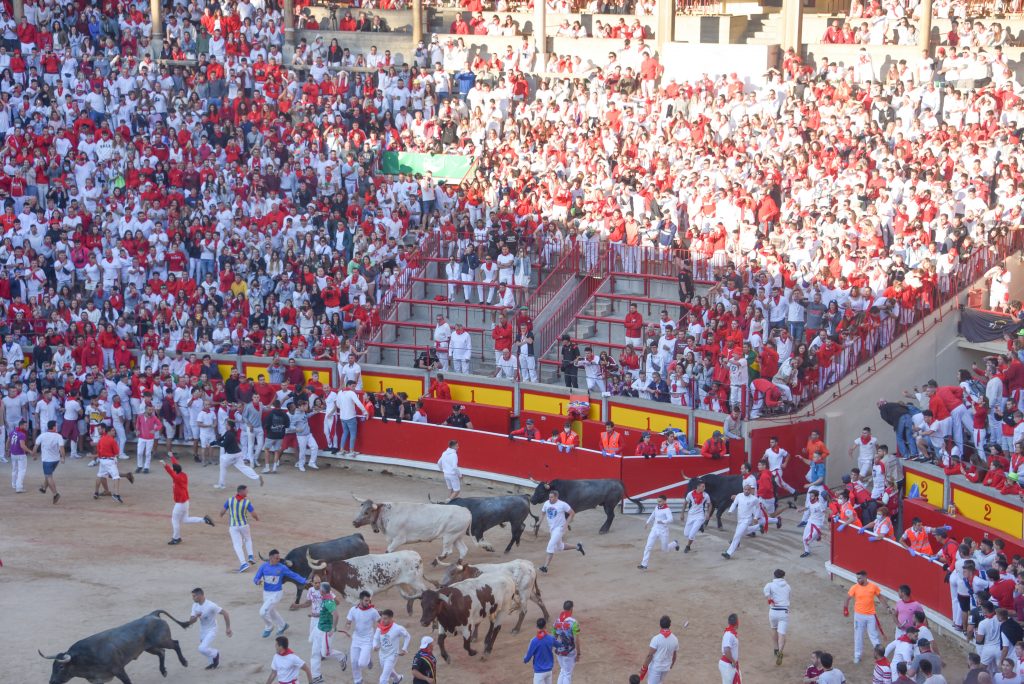
San Fermín (Running of the Bulls): This iconic festival in Pamplona, held from July 6 to 14, involves running with bulls through the streets. It’s part of a larger celebration honoring San Fermín, the patron saint of Navarre.
Las Fallas: Celebrated in Valencia from March 15 to 19, Las Fallas features large papier-mâché sculptures that are displayed throughout the city and eventually burned in massive bonfires.
La Feria de Málaga: This summer fair in Málaga features parades, live music, flamenco performances, and various activities celebrating Andalusian culture.
La Batalla del Vino (Wine Battle): In the town of Haro in La Rioja, participants soak each other in wine during the Feast of St. Peter.
Corpus Christi: Celebrated across Spain, this festival involves impressive processions featuring religious icons and ornate displays in various cities.
Feria de Agosto (August Fair): Held in Malaga, this lively fair includes music, dancing, and entertainment, celebrating Andalusian traditions.

Candelaria Festival: Celebrated in Tenerife, this festival includes religious processions, music, dancing, and traditional Canarian customs.
These are just a few examples of the many festivals celebrated in Spain. Keep in mind specific dates and details may vary from year to year, so it’s a good idea to check closer to your planned visit.
Ready to hit the Spanish streets? Visit https://mvptravel.com/travel-agency-locations/ to find a travel advisor near you! They look forward to hearing from you!
